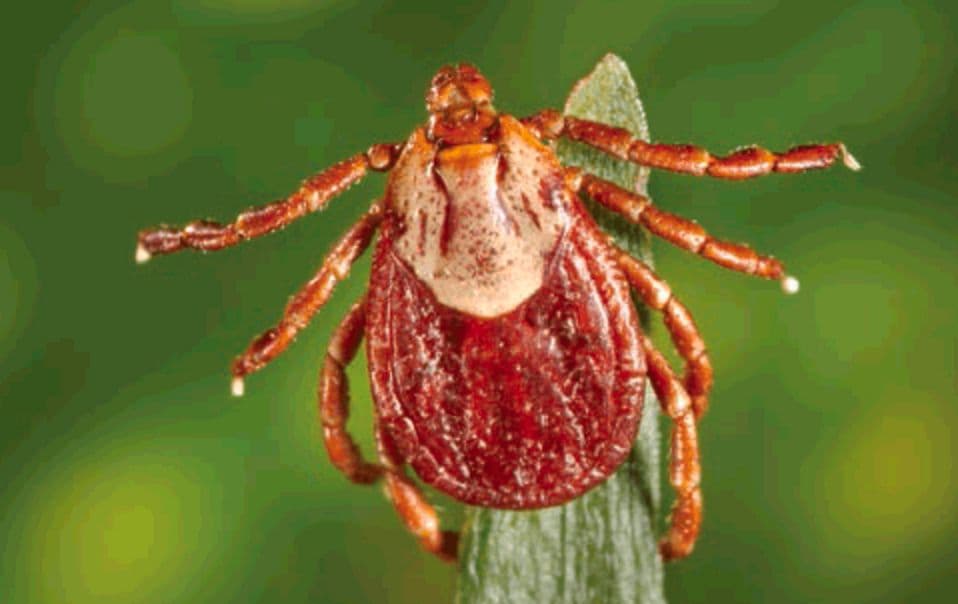Rocky Mountain Spotted Fever and Pregnancy
Infections
Obie Editorial Team

Rocky Mountain spotted fever (Rickettsia rickettsii) and pregnancy complications
Rickettsia rickettsii is a bacterium that causes Rocky Mountain spotted fever and affects a large majority of the Western Hemisphere and small portions of the Eastern Hemisphere. Another disease called Mediterranean spotted fever (MSF) is caused by Rickettsia conorii. Rocky Mountain spotted fever is mainly transmitted by an anthropod, a tick.
Arthropod-borne bacterial diseases affect more than 25,000 Americans every year and thousands more around the world. Diagnosis is particularly challenging during pregnancy, as these infections may mimic common pregnancy-specific conditions, such as typical and atypical preeclampsia, or symptoms of pregnancy itself.
According to the CDC, the reported incidence of tickborne rickettsial diseases in the United States has increased during the past decade and continues to cause severe illness and death in otherwise healthy adults and children, despite the availability of effective antibacterial therapy. Early signs and symptoms of tickborne rickettsial illnesses are nonspecific, and most cases of RMSF are misdiagnosed at the patient’s first visit for medical care, even in areas where awareness of RMSF is high. To increase the likelihood of an early, accurate diagnosis, health care providers should be familiar with risk factors, signs, and symptoms consistent with tickborne rickettsial diseases.
Tickborne rickettsial diseases (TBRD) are clinically similar, yet epidemiologically and etiologically distinct illnesses. In the United States, these diseases include
- Rocky Mountain spotted fever (RMSF),
- human monocytotropic (or monocytic) ehrlichiosis (HME),
- human granulocytotropic (or granulocytic) anaplasmosis (HGA, formerly known as human granulocytotropic ehrlichiosis or HGE)
- Ehrlichia ewingii infection
- other emerging TBRD.
Other arthropod-borne bacterial diseases include:
- Lyme disease
- Rocky Mountain spotted fever
- tick-borne relapsing fever
- typhus
- plague
- cat-scratch disease
- Carrión disease
R. rickettsii bacteria are transmitted mostly by ticks that carry R. rickettsia. There are currently three known tick specifics that commonly carry R. rickettsii.
- American dog tick (Dermacentor variabilis)
- Rocky Mountain Wood Tick (Dermacentor andersoni)
- Brown dog tick (Rhipicephalus sanguine)
Ticks can contract R. rickettsii by many means:
- An uninfected tick can become infected when feeding on the blood of an infected host; such as a rabbit. Once a tick becomes infected with this pathogen, they are infected for life. Both the American dog tick and the Rocky Mountain wood tick serve as long-term reservoirs for Rickettsia rickettsii, in which the organism resides in the tick posterior diverticulae of the midgut, the small intestine, and the ovaries.
- In addition, an infected male tick can transmit the organism to an uninfected female during mating. Once infected, the female tick can transmit the infection to her offspring, in a process known as transovarial transmission.
Rickettsia rickettsii can be transmitted to mammals, including humans in multiple ways:
- One way of infection is by the bite of an infected tick. After getting bitten by an infected tick, R. rickettsiae is transmitted to the bloodstream by tick salivary secretions.
- Another way of contraction is through the contact of infected host feces to an uninfected host. If infected host feces comes into contact with an open skin wound, it is possible for the disease to be transmitted.
- Additionally, an uninfected host can become infected with R. rickettsii when eating food that contains the feces of the infected vector.
Symptoms of RMSF in pregnancy
Different rickettsial infections tend to cause similar symptoms:
- A general feeling of illness (malaise)
- Fever
- Severe headache
- A characteristic rash
A sore covered by a black scab (eschar) may form at the site of the bite. Because the rash often does not appear for several days, early rickettsial infection is often mistaken for a common viral infection, such as influenza. People may have swollen lymph nodes.
As the infection progresses, people typically experience confusion and severe weakness—often with a cough, difficulty breathing, and sometimes vomiting.
When the infection is advanced, gangrene may develop, the liver or spleen may enlarge, the kidneys may malfunction, and blood pressure may fall dangerously low (causing shock). Death can result.
Treatment of RMSF Rocky Mountain spotted fever in pregnancy
The most effective treatment is tetracycline. However, while tetracyclines typically are contraindicated for use during pregnancy, their use might be warranted in life-threatening situations where clinical suspicion of TBRD is high.
Only limited clinical data exist that support the use of antibacterial agents other than doxycycline in the treatment of tickborne rickettsial disease during pregnancy. Doxycycline has been used successfully to treat tickborne rickettsial diseases in several pregnant women without adverse effects to the mother. Chloramphenicol is a potential alternative treatment for RMSF during pregnancy; however, care must be used when administering the drug late during the third trimester of pregnancy because of the theoretical risk for gray baby syndrome. Limited case report data suggest that rifampin could be considered an alternative to doxycycline for the treatment of mild anaplasmosis during pregnancy.
Rocky Mountain spotted fever and breastfeeding
The recommended treatment for RMSF is an antibiotic called doxycycline which is excreted into breast milk at low levels. The extent of absorption of breastmilk by nursing infants is unknown. According to the Centers for Diseases Control (CDC), short-term use of doxycycline as recommended for the treatment of tickborne rickettsial disease is considered probably safe during lactation on the basis of available literature and expert opinion.
More on diagnosis and management of tickborne rickettsial disease on the CDC website







